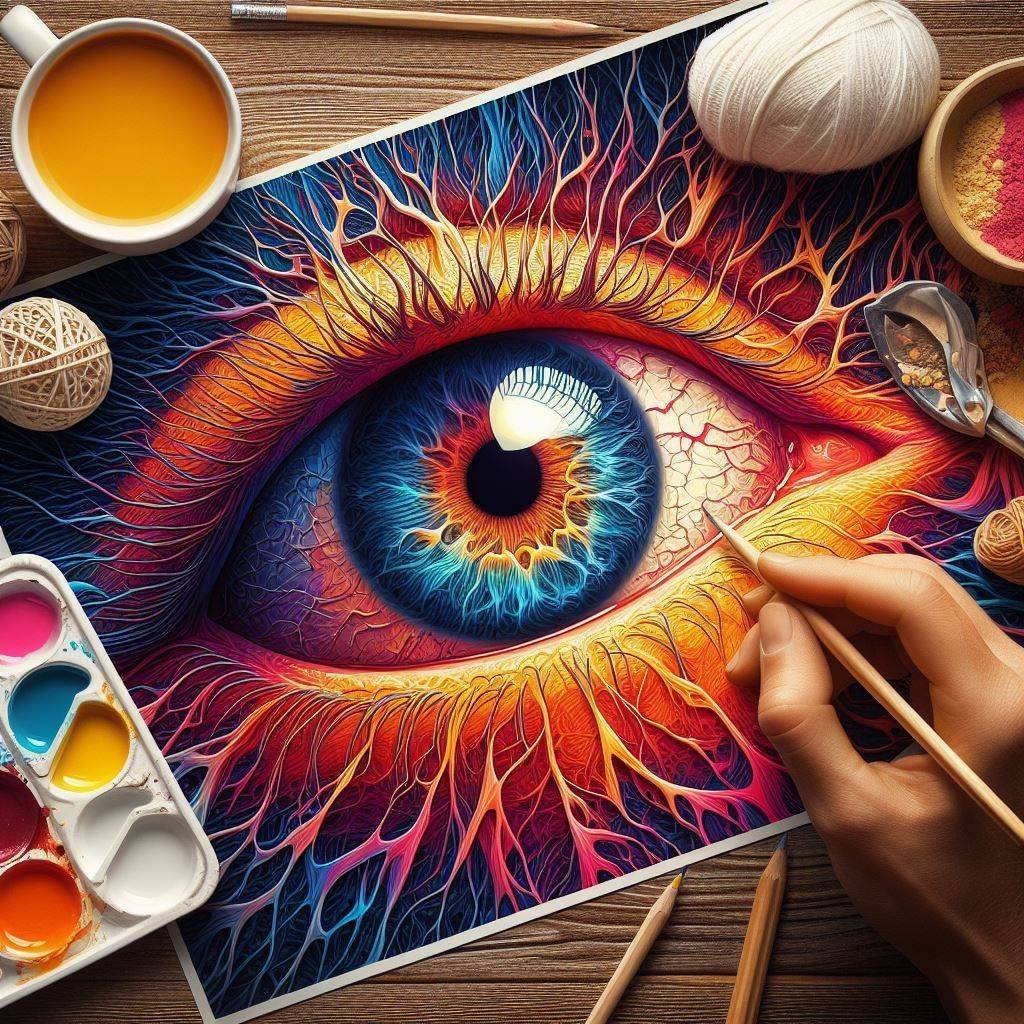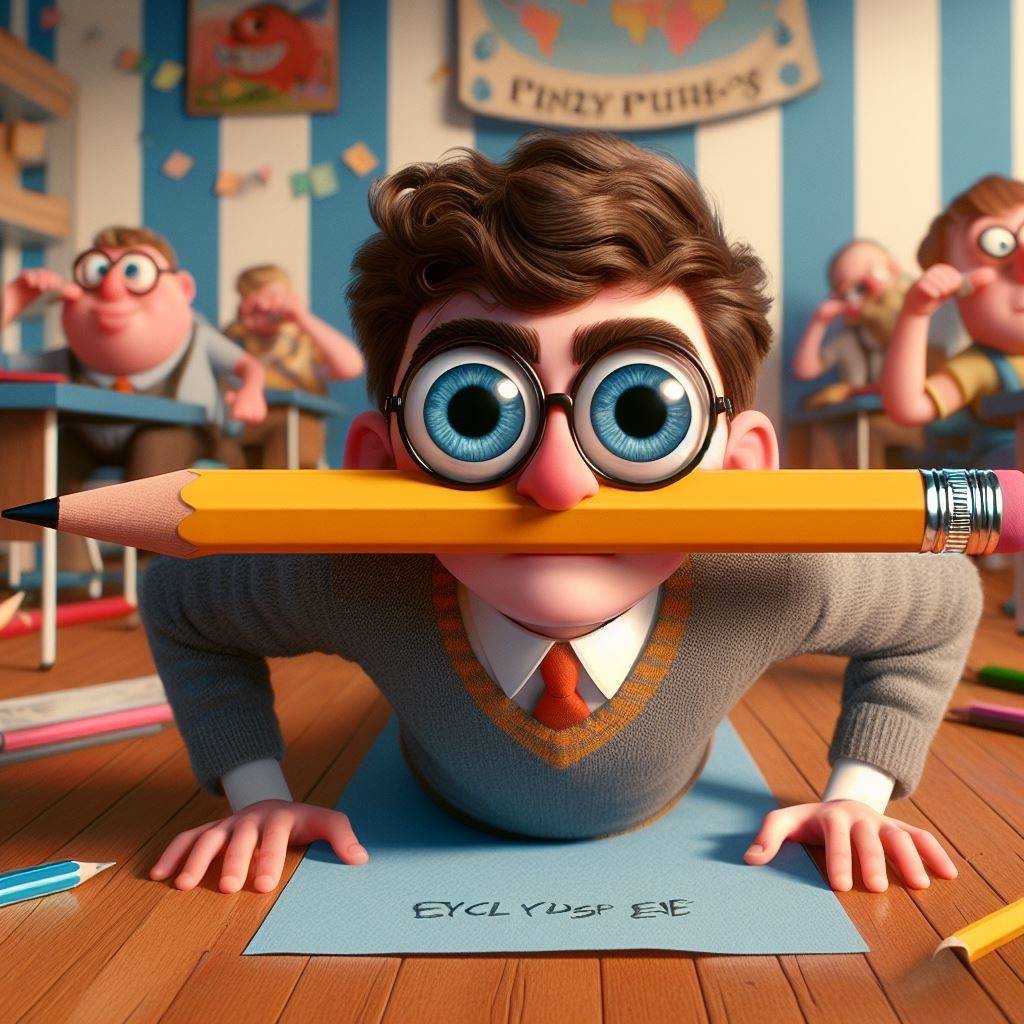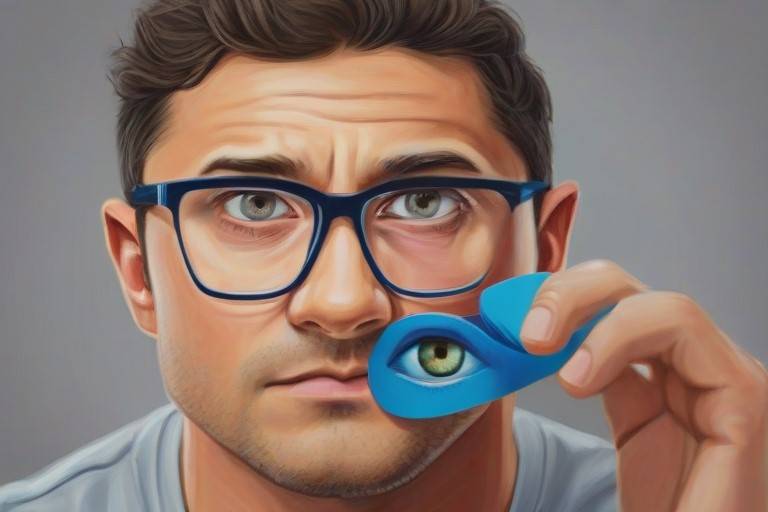Lazy Eye Exercises Unveiled: Your Path to Clear Vision!
Lazy eye, also known as amblyopia, affects around 3% of people and can cause blurred vision. While glasses alone may not fully correct lazy eye, specialized exercises can help strengthen the weak eye muscles and improve vision. This article unveils the most effective lazy eye exercises for people of all ages.
Key Takeaways: Lazy Eye Exercises
- Lazy eye, or amblyopia, is a condition caused by abnormal visual development, leading to poor vision in one eye.
- Specialized exercises can help strengthen weak eye muscles and stimulate neural connections.
- Pencil push-ups, brock string exercises, and eye patching help improve lazy eye.
- Vision therapy sessions with eye doctors provide guided treatment plans with eye exercises.
- Consistency with a customized lazy eye exercise routine is key for improving vision.
What is Lazy Eye?

Lazy eye, also known by its medical term amblyopia, is a condition that develops when there is a breakdown in how the brain and eyes work together. It causes poor vision in an otherwise normally-formed eye due to abnormal development of vision in childhood.
With the lazy eye, images seen in the weak eye are not transmitted properly to the brain for interpretation. Over time, this leads to worsening vision and loss of depth perception or 3D vision. A lazy eye commonly affects only one eye, but both eyes can sometimes be impacted.
Some key facts about the lazy eye:
- Affects approximately 2-3%of people
- Typically, only impacts one eye (it can be both eyes)
- Caused by issues in visual development in childhood
- This leads to increasingly blurred vision in time
There are several causes of lazy eye during childhood visual development, including:
- Uneven focus or clarity between the two eyes, like from a need for glasses
- Eyes that do not align properly (strabismus)
- A trauma, injury, or issue blocking vision in one eye
A lazy eye causes information from one eye to be ignored or not fully processed by the brain. This confusion in visual input during development leads to permanent vision loss if not treated early.
Traditional Treatments for Lazy Eye
Traditional treatments for lazy eye center on forcing the child to use both eyes together, overcoming this developmental issue. Treatments include:
- Patching or covering the strong eye which pushes the weak eye to work harder
- Glassesto improves clarity and coordination between the eyes
- Eye drops like atropine to blur the strong eye short-term
These treatments for lazy eye may be effective and are often the first line of treatment in children. However, eye patching and drops can be psychologically difficult for kids. Also, glasses alone may not fully retrain the eye and brain to work together.
This is where targeted lazy eye exercises come in as an effective treatment approach.
How Does Lazy Eye Exercise Work?

Specialized vision therapy and lazy eye exercises help train the eyes and visual system to work better together. These exercises incorporate eye focusing, tracking, and alignment skills.
The goals of lazy eye exercises include:
- Strengthening weak eye muscles
- Stimulating neural connections between the eyes and brain
- Improving control and coordination of eye movements
Consistently performing these corrective eye exercises helps reestablish communication between the eyes and visual processing parts of the brain. This can lead to gradual improvement in lazy eye vision.
Types of Lazy Eye Exercises and Treatment Routines
Many different eye exercises can help improve lazy eye vision. Under guidance from an optometrist or ophthalmologist, a customized program is developed targeting specific vision issues.
Here are some of the most common and effective lazy eye exercises:
Pencil Push-Ups Lazy Eye Exercises

One of the simplest lazy eye exercises is pencil push-ups. This exercise strengthens eye-focusing muscles and eye coordination.
How to do pencil push-ups:
- Hold a pencil at arm’s length in front of your nose
- Focus your eyes on the tip of the pencil
- Slowly bring the pencil towards your nose until it starts to blur
- Once blurred, move the pencil back to arm’s distance
- Repeat 10+ times
This can be done daily, even multiple times per day, to work the eye muscles and build control.
Brock String Lazy Eye Exercises

The brock string is a special string with different colour beads on it used for vision therapy. This Lazy Eye Exercise helps train both eyes to work together by focusing on the beads.
How to do brock string exercises:
- Tie a brock string horizontally with beads at the midline
- With both eyes open, stare at a bead, keeping it lined up
- Slowly move focus along the string from bead to bead
- Switch to the next bead only when both stay aligned
- Repeat sequence across full string length
Try this for 5-10 minutes daily to improve eye alignment and teamwork. It can also be done with household strings and beads.
Eye Patching lazy eye exercises

Using patches or tape on glasses over the strong eye encourages the lazy eye to work harder. This is most effective when paired with pencil push-ups and similar focusing tasks.
Tips when eye patching:
- Check with the doctor on duration and schedule
- Only patch the strong eye
- Focus on pencil push-ups while your eye is patched
- Gradually increase the patching time as exercise capacity improves
At-Home Treatment Plans
Customized at-home therapy plans prescribe a set of lazy eye exercises targeting specific deficiencies. These are guided by the individual’s degree of lazy eye and areas of visual difficulty.
Example at-home lazy eye exercise routine:
The at-home plan above demonstrates a sample lazy eye exercise schedule, including pencil push-ups, brock string training, and patching. Similar customized plans adjusted for age and initial vision ability prove very effective. Consistency is key.
Treating Lazy Eye with In-Office Vision Therapy
For more advanced lazy eye treatment, customized in-office vision therapy plans offer more advanced therapies. These specialized eye programs are guided by doctors and orthoptists.
Vision therapy routines combine lazy eye exercises, equipment drills, and activities forcing eye collaboration. This can better stimulate neural connections compared to occasional at-home training.
Who Provides In-Office Lazy Eye Therapy?
Specialized lazy eye evaluation and vision therapy plans are offered by a variety of eye doctors:
- Pediatric ophthalmologists: medical doctors focusing on children’s eye care and disorders like lazy eye.
- Pediatric optometrists: doctors of optometry trained in providing glasses, contact lenses, and vision therapy for children with conditions including amblyopia.
- Orthoptists: vision therapy professionals trained to evaluate eye alignment and movement disorders and provide vision correction therapies.
Consult one of these specialists for complete lazy eye testing and customized treatment regimens, including coordinated office-based vision therapy.
What to Expect in Vision Therapy Sessions?
In-office vision therapy sessions last 30-60 minutes and incorporate a range of lazy eye exercises using equipment and activities. These force the eyes to overcome specific deficiencies and work together for unified vision restoration.
A sampling of interactive vision therapy tasks includes:
Oculomotor Training
- Eye patch activities
- Brock string drills
- Saccadic eye movement routines
Eye-Hand Coordination Skill Building
- Eye-hand reaction drills
- Eye tracking activities
- Visual motor skill games
Binocular Vision Treatment
- Stereo viewing to improve depth perception
- Fusion exercises fusing both eyes’ images
- Rotator/spinner for alignment
The vision therapy plan challenges the eyes and brain to learn new patterns of working together for clear, balanced vision between the eyes. The eye doctor tailors the plan and exercises based on the individual lazy eye causes and severities.
Consistency is Key for Lazy Eye Exercise Success
Whether done at home or in-vision therapy, consistency is vital for improving lazy eye with these eye exercises. The keys to success include:
Comprehensive Evaluation
Thorough testing by a children’s eye specialist identifies specific lazy eye causes and degrees to customize the treatment plan.
Personalized Exercise Routine
Each lazy eye case has unique deficiencies to target through the specialized exercise regimen.
Regular Training Schedule
Consistent daily practice of these eye exercises trains the brain and eyes to coordinate better.
Supported Practice
In-office vision therapy provides guided coaching and equipment for optimal results.
Progress Monitoring
Follow-up testing ensures the lazy eye responds as expected or if adjustments are needed.
With diligence to the eye therapy plan, gradual enhancements in visual acuity and depth perception from lazy eye are achievable.
The Outlook for Lazy Eye Treatment with Exercise
When caught early, especially in young children, lazy eye is highly treatable with consistent speciality eye exercises. These eye training activities can help strengthen the weak eye, stimulate new connections between the eyes and brain, and establish better eye coordination.
In many cases, diligent vision therapy interventions using pencil push-ups, eye patching, brock string training, and similar lazy eye exercises lead to major improvements. While lazy eyes often cannot be fully cured, continuing these eye-strengthening routines helps maintain any visual gains. Commitment to customized lazy eye exercise regimens offers hope for clearer vision, whether conducted at home or through professional vision therapy. Those living with amblyopia can overcome this challenging eyesight disorder by tapping into neuroplasticity and eye muscle control.
Conclusion
Lazy eye is a common vision development condition that leads to unclear, imbalanced eyesight between the two eyes if left untreated. Specialized corrective vision therapies and lazy eye exercises prove highly effective for improving visual acuity, clarity, and eye alignment. Consistency with these eye training routines rewires the visual system for better eye performance.



